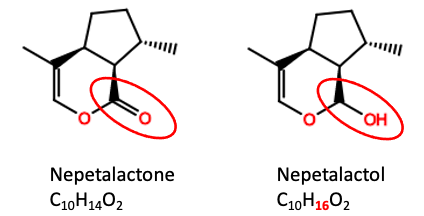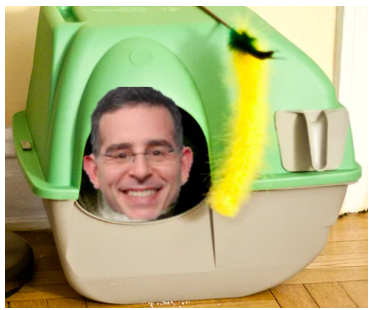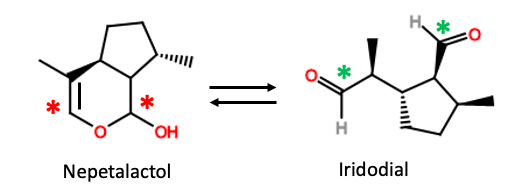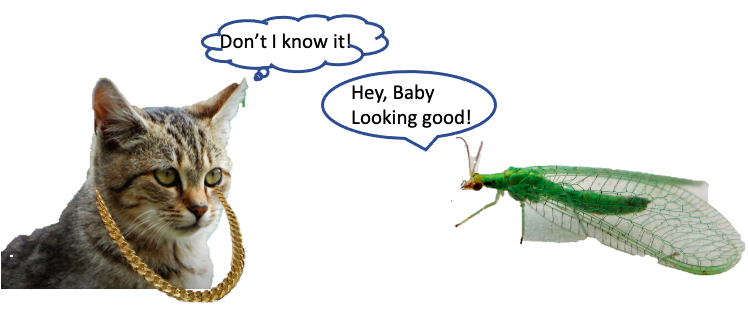In this mad world, it's OK for college students to guzzle obscene amounts of alcohol (so that they can become adults who will guzzle obscene amounts of alcohol), and marijuana sales are expected to be $30 billion by 2023 even though 4 million people being diagnosed with marijuana use disorder. But good luck trying to get Vicodin. And methamphetamine and cocaine, even though together they killed more than twice as many Americans as all prescription opioids together in 2019, don't elicit a peep from the Anti-Opioid Boogey Monsters. Nope. It's opioids opioids opioids. That's all they care about.
But, if you're expecting another screed about how pain patients are being denied essential medications, I must apologize in advance. Today, sadly, I must tackle a different facet of the opioid epidemic – The Catnip Cataclysm. Yes folks, while you're off doing your 9 to 5, Foofie is getting f#### up with an opioid-like chemical.
New research has revealed that a chemical in catnip called napatalactol is responsible for your cat's flipped out behavior. And it has opioid-like effects! According to today's norms, this is entirely unacceptable. It's well past time for the Kolodnys and Ballantynes of the world to get out of their academic litter boxes and spring into action to prevent feline society from turning into a bunch of cat-dicts. Now!

Two of many unhappy residents of Phoenix House? Images: Pxhere, pixabay, Phoenix House.
Let's take a look at the chemistry of catnip and why it should be unacceptable to expose Foofie to it. It's fascinating.
First, most organic chemists "know" that a chemical in catnip called nepetalactone is responsible for the strange reaction of cats to the stuff, but it turns out we've been wrong. By two hydrogen atoms. A recent article in Science Magazine demonstrates this quite nicely.
Masao Miyazaki, Ph.D., DVM, an associate professor biologist at Iwate University, and colleagues isolated and separated the chemicals from catnip, determined their structures, and identified the most potent component in catnip. It is not nepetalactone, but rather a reduced (1) form of it called nepetalactol that drives cats berserk. The Iwate group tested the culprit by putting it in paper pouches (with saline pouches as a control). Not only did most house cats respond to the nepetalactol pouches, but so did 30 feral cats, one leopard, two lynxes, and two jaguars living in zoos in Japan. Dogs and mice showed no interest. Neither did Bigfoot.
Hmm. Note that chemical names are now being used. Could it be time for the Dreaded Chemistry Lesson From HellTM? No! There is insufficient chemical torture here to qualify for DCLFHTM status. What to do? It's time to introduce a less repulsive experience – TMUCLFC.TM


Figure 1. Nepetalactol (R) is a reduced version of nepetalactone (L). You can see the two additional hydrogen atoms in the chemical formula in red.
Opioid? Seriously?
Yes. Nepetalactol activates cat opioid systems, much like heroin and morphine do in humans, by triggering the release of endorphins – endogenous hormones that make the animals feel good. In a sense, nepetalactol can be considered to be "cat oxycodone." So, it's absolutely essential that we call in "addiction experts" to protect our feline brothers and sisters. Here's one...

Andrew "Whiskers" Kolodny. He's coming for your catnip. When he's finished. Photo: Petful.com
Why do cats love Nepetalactol?
Both nepetalactone and nepetalactol (Figure 1) are known insect repellents, and this is why cats rub catnip on their heads – to repel the Aedes albopictus mosquito (2). Over time evolution made sure that they kept doing it by rewarding the cats that figured this out by getting them high. An opioid high!
But things get weird

Figure 2. Nepetalactol can exist in equilibrium in two forms; a closed form with a six-membered ring (left) and an open form (right). The open form, which is called iridodial, contains two aldehyde groups (green asterisks). (The red asterisks indicate the carbon atoms that become the aldehyde carbons.)
Stay with me here. Nepetalactol belongs to a class of organic compounds called acetals, which can "break down" to give aldehydes. With nepetalactol this breakdown occurs to form some iridodial, but the reaction is reversible (3), so both forms will exist under most conditions. This is seriously strange because iridodial is a powerful attractant of a bug called the green lacewing. By rubbing their heads in catnip, cats are simultaneously repelling mosquitos while attracting green lacewings.
A single chemical can exist in two very different forms. It attracts one kind of bug but repels another and makes cats go batsh** catsh** Ain't chemistry grand?

NOTES:
(1) In organic chemistry, a reduction reaction is one that adds hydrogen to a molecule.
(2) Nepetalactone is a better mosquito repellent than DEET by 10-fold.
(3) The double arrow indicates that there is an equilibrium between both forms of the molecule.




